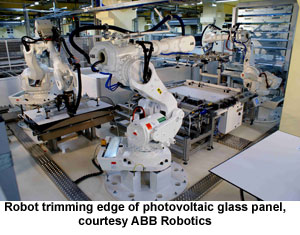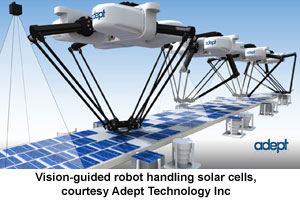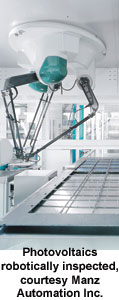Την ικανότητα να προσαρμοστεί αποτελεσματικά σε διαφορετικές περιστάσεις με την κατάλληλη εφαρμογή λογισμικού χάρη στη ικανότητα να συνδυάζει την ψυχαγωγία με την εκπαίδευση διαθέτει το ανθρωποειδές ρομπότ ΝΑΟ που διαθέτει στην ελληνική αγορά η Mobile Technology, και έχει σχεδιάστεί από τη SoftBank Robotics.
Όπως αναφέρεται σε ανακοίνωση της εταιρίας με αφορμή την συμμετοχή της στο τριήμερο φεστιβάλ EcoFest 2021, στο περίπτερο του Πανεπιστημίου Δυτικής Αττικής (ΠΑΔΑ), το ανθρωποειδές ρομπότ ΝΑΟ έχει παραχωρηθεί στο Ερευνητικό Εργαστήρι CoNSeRT του ΠΑΔΑ, με σκοπό την ανάπτυξη εφαρμογών, αναφέρει το ΑΠΕ.
Με αφορμή τη συμμετοχή στο EcoFest 2021, το Εργαστήριο CoNSeRT του ΠΑΔΑ σχεδίασε ειδική εκπαιδευτική εφαρμογή, με την οποία το ρομπότ παρακινούσε τους επισκέπτες να γίνουν «ecoists», υιοθετώντας μια οικολογική στάση ζωής, με σεβασμό στο περιβάλλον. Ο ΝΑΟ απαντούσε στους επισκέπτες σχετικά με τις ορθές περιβαλλοντικές συνήθειες που μπορούν να εφαρμόζουν και έπαιζε το εκπαιδευτικό παιχνίδι «Πως να είσαι ecoιστής!». Όπως αναφέρεται στην ανακοίνωση, το συγκεκριμένο ρομπότ συγκαταλέγεται σε ένα από τα πλέον αγαπητά ανθρωποειδή ρομπότ διεθνώς. Η Mobile Technology από το 2003 σχεδιάζει και υλοποιεί ολοκληρωμένες λύσεις που βασίζονται σε συστήματα συλλογής δεδομένων και φορητά υπολογιστικά συστήματα για επιχειρήσεις. Επενδύει στην καινοτομία και στις νέες τεχνολογίες που συμβάλλουν στην αύξηση της παραγωγικότητας και στoν μετασχηματισμό των επιχειρησιακών διαδικασιών. Χαρακτηριστικό παράδειγμα αποτελούν το RFID, τα συστήματα διαχείρισης φωνητικών εντολών, οι ηλεκτρονικές ετικέτες ραφιού η ρομποτική, με τα ανθρωποειδή ρομπότ Pepper και ΝΑΟ.
Το CoNSeRT ιδρύθηκε το 2019 ως εργαστήριο του Πανεπιστημίου Δυτικής Αττικής και αποτελεί τη συνέχεια της ομώνυμης ερευνητικής ομάδας CoNSeRT, η οποία συστάθηκε το 2016. Το CoNSeRT δραστηριοποιείται στην έρευνα για τον σχεδιασμό και την υλοποίηση εφαρμογών και υπηρεσιών, δίνοντας έμφαση στη Μηχανική Μάθηση, Κινητό και Φορετό Υπολογισμό, Συναισθηματική Υπολογιστική & Μάθηση, Διαδίκτυο των Πραγμάτων, καθώς και πλατφόρμες/λύσεις Νεφοϋπολογισμού. Οι ερευνητές του ConSeRT έχουν συμμετάσχει επιτυχώς τόσο σε προτάσεις χρηματοδότησης έρευνας, όσο και στην υλοποίηση αντίστοιχων εγχειρημάτων, έχοντας στο ενεργητικό τους αρκετά ευρωπαϊκά (H2020, FP7) αλλά και εθνικά έργα, με προϋπολογισμό χρηματοδότησης που υπερβαίνει τα 1,75 εκατομμύρια ευρώ.
Πηγή φωτογραφίας: Mobile Technology
Going Green with Robotics
POSTED 06/02/2009
| By: Bennett Brumson, Contributing Editor
As the world reaches its peak of energy production along with increasing concerns about the health of our planet, manufacturers are looking at ways to be more environmentally friendly. “More products will become greener by using robotics to build them,” says, John Dulchinos, President and Chief Executive Officer of Adept Technology Inc., Livermore, California.
From saving energy, reducing scrap, to minimizing human handling of extremely small and large parts, robots are particularly suited in the fabrication of solar panels, light-emitting diodes (LED), wind turbines and other “green” products. Robots also have a crucial role in “greening” the manufacture of conventional products.
Companies that make green products and those trying to lessen the impact of their production processes will have a chance to discuss environmentally-friendly manufacturing at the 2009 International Robot, Vision & Motion Control Show and Conference to be held at the Donald E. Stephens Center in Rosemont (Chicago), Illinois June 8-11.
Forecast: Sunny
As demand for alternative sources of electricity rises, robotics will have an increasingly important role in the manufacture of solar panels, thin film solar modules, and wind turbines. “Green manufacturing is a bright subject for Ellison. The number of robots sold to make solar panels has undergone huge growth in recent years,” says John Burg, President of Ellison Technologies Automation (Council Bluffs, Iowa). “The processes of making solar panels is not easy for humans to do because of the cleanliness requirements. Cleanrooms are the right environment for using robots.”
 “Crystalline PV solar panel manufacturing lends itself nicely for automated robotic solutions in high volume facilities,” said Keith Fox, Alternative Energy Business Development Manager, ABB Robotics, NA. “The manufacturing process is repeatable and very labor intensive. Solar panel manufacturing is beginning to mature to the point that standard function packages are now available that reduce cost and integration time,” says Fox.”
“Crystalline PV solar panel manufacturing lends itself nicely for automated robotic solutions in high volume facilities,” said Keith Fox, Alternative Energy Business Development Manager, ABB Robotics, NA. “The manufacturing process is repeatable and very labor intensive. Solar panel manufacturing is beginning to mature to the point that standard function packages are now available that reduce cost and integration time,” says Fox.”
“FANUC is seeing many start-up companies involved in green technologies in North America. Solar, wind turbines, and battery manufacturing for electric vehicles are becoming big in North America,” says Christopher Blanchette, National Distribution Sales Account Manager at FANUC Robotics America Inc. (Rochester Hills, Michigan) “We are also seeing more business in manufacturing inverters, power management electronics, and LEDs.”
Blanchette notices established Asian and European companies gaining a toehold in the North American solar and wind turbine markets. “Green technologies have evolved to a more mature state in Asia and Europe,” Blanchette says. “Companies are taking advantage of volatile energy prices. More foreign providers of support elements in solar and wind systems, such as tracking mechanisms and light-weight structural components, are coming to North America.”
Of solar energy systems, Blanchette sees thin film modules evolving the most rapidly. “Because thin film modules have many techniques to process them, robotics are becoming an important tool to make them. Traditional crystalline silicon have a more limited array of technological possibilities in its manufacture.” Blanchette continues, saying, “Designers of thin film solar systems are working on different doping techniques. Some are depositing materials onto glass while some use an imprinting process.” Because of this variation, companies that make thin film solar modules have gravitated to the use of robotics due to their inherent flexibility, claims Blanchette.
 As solar panels become thinner, it makes sense that robotics are deployed to assist in their manufacture, says Adept’s John Dulchinos. “When solar panels are 200 microns thick or less, humans have difficulty in effectively manually handling them without causing damage. Robotics are able to handle solar cells very gently and transfer them with a much lower scrap rate than if done by hand.” Dulchinos sees big opportunities for robotics in solar cell assembly as they become thinner and more brittle.
As solar panels become thinner, it makes sense that robotics are deployed to assist in their manufacture, says Adept’s John Dulchinos. “When solar panels are 200 microns thick or less, humans have difficulty in effectively manually handling them without causing damage. Robotics are able to handle solar cells very gently and transfer them with a much lower scrap rate than if done by hand.” Dulchinos sees big opportunities for robotics in solar cell assembly as they become thinner and more brittle.
Thinner solar panels is also on the mind of Dieter Manz, Chief Executive Officer of Manz Inc. (North Kingstown, Rhode Island), who says, “Robotics are the key to high volume in solar cell production. The use of robotics has allowed reduced panel thickness from about 300 microns a couple years ago down to 150 microns, while tact time has been reduced from four seconds to 1.5.”
 Likewise, Dan Shumaker, Market Research Manager with Motoman Inc. of West Carrollton, Ohio, believes, “Solar panels are becoming much thinner and robotic handling can reduce damage compared to manual handling. Robotics can be utilized in many green products like solar panels and wind turbines, in applications such as welding and material handling”
Likewise, Dan Shumaker, Market Research Manager with Motoman Inc. of West Carrollton, Ohio, believes, “Solar panels are becoming much thinner and robotic handling can reduce damage compared to manual handling. Robotics can be utilized in many green products like solar panels and wind turbines, in applications such as welding and material handling”
With demand for solar panels expected to rise, opportunities for robotics in their manufacture and inspection will increase as well. “Inspecting solar components is not too different from inspecting other electronics. Our equipment is inspecting seals, welds, and components that go behind the silicon,” says Gregory Hollows, Director of Machine Vision Products with Edmund Optics, Barrington, New Jersey. “Inspecting solar panels is getting big in machine vision. Existing technologies are leveraged very well into the inspection of solar panels.”




0 Post a Comment:
إرسال تعليق